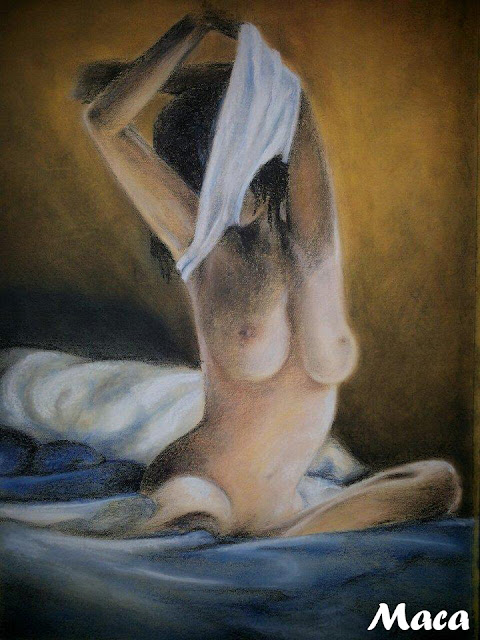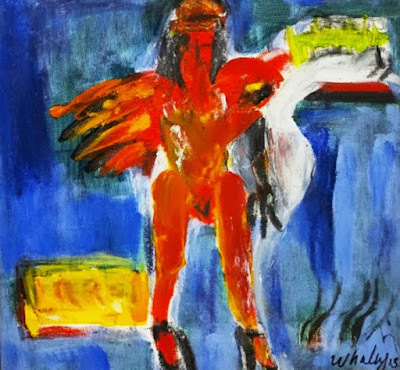Kevin Charles "Pro" Hart
Kevin Charles "Pro" Hart, MBE
(30 May 1928 – 28 March 2006), was an Australian artist, born in
Broken Hill, New South Wales, who was considered the father of the
Australian Outback painting movement and his works are widely admired
for capturing the true spirit of the outback. He grew up on his
families sheep farm in Menindee, New South Wales and was nicknamed
"Professor" (hence "Pro") during his younger
days, when he was known as an inventor.
His pictures are typically painted with
oil or acrylic, using paint brushes and sponges, and depict scenes of
rural town life, topical commentary, and some religious subjects. His
illustrations for the collection of Henry Lawson's poems show keen
powers of character observation combined with a n obvious wit. Hart
was also a sculptor, working with welded steel, bronze and
ceramics.Wikipedia
Albert Tucker
Albert Lee Tucker (29 December 1914 –
23 October 1999),was an Australian artist, and member of the Heide
Circle, a group of modernist artists and writers that centred on the
art patrons John and Sunday Reed, whose home, "Heide",
located in Bulleen, near Heidelberg (outside Melbourne), was a haven
for the group
Tucker's main inspirations include
post-impressionists, expressionists and social realists, as well as
personal experience. Tucker's work was strongly influenced by the
realistic reflections of two important émigré artists, Josl Bergner
and Danila Vassilieff, who arrived in Melbourne in the late 1930s
about the same time that Tucker began to explore images of the Great
Depression. Tucker also met Sunday and John Reed, members of the
Contemporary Art Society, which was set up in 1938 by George Bell, in
opposition to the government Australian Academy of Art, which was
believed to promote conservative art and not the modernists.Wikipedia
Gordon Bennett
Gordon Bennett (10 August 1955 – 3
June 2014) was an Australian artist of Aboriginal and Anglo-Gaelic
descent. Born in Monto, Queensland, Bennett was a significant figure
in contemporary Indigenous Australian art. Gordon Bennett died on 3
June 2014, of natural causes.Wikipedia






















































